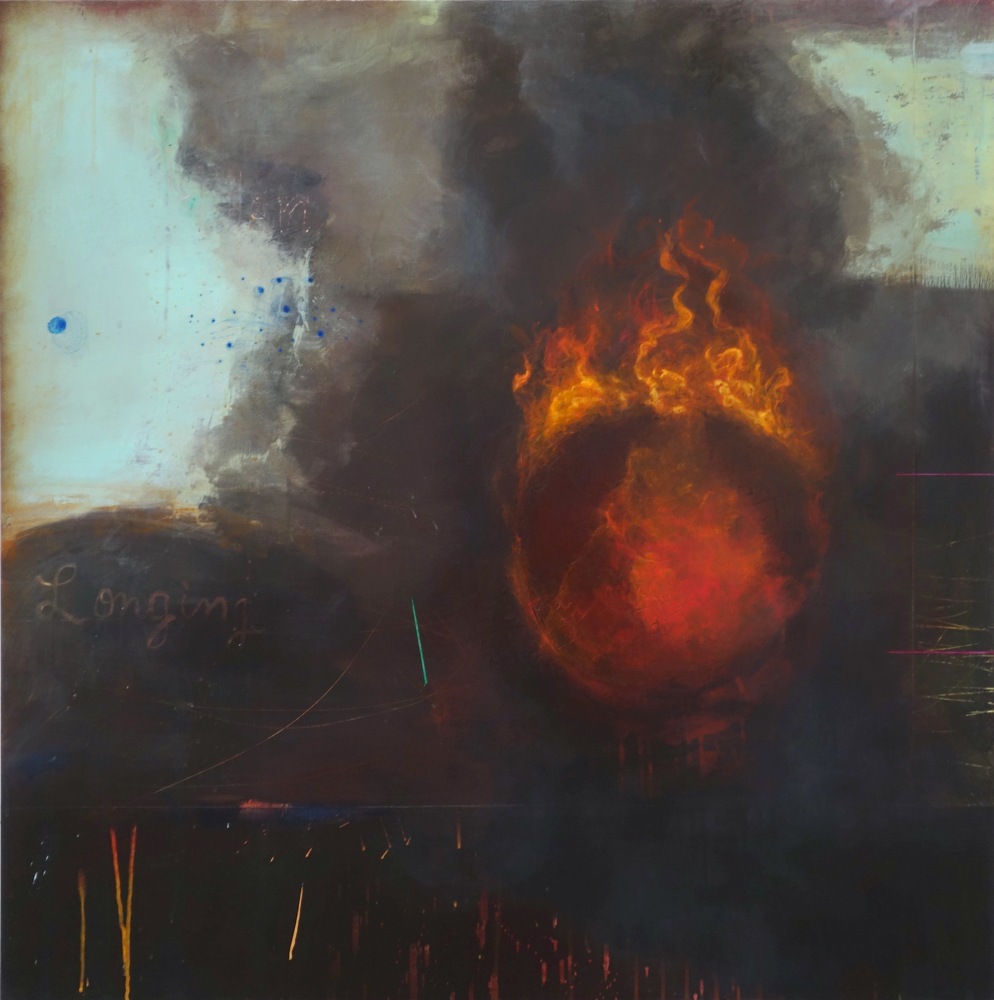
No Lie In Her Fire (from Charles Bukowski quote), 2017, acrylic, latex, spray paint and colored pencil on wood panel, 36"h x 36"w x 1.75"d
Mark Jenkins, The Washington Post
The most incendiary picture in Renee Stout’s show at Hemphill Fine Arts depicts a human heart within a house afire, with a slightly darker shade of red. The image’s power and mystery are not unexpected, but its directness is. Stout often exhibits intricate found-object sculptures that combine primeval spirituality with obsolete technology. They seem designed to receive the past from the ether — or the ethereal from the past. But “When 6 Is 9: Visions of a Parallel Universe” is made up of mostly paintings, their subjects rarefied or abstracted.
The blazing heart picture, “Red House in Black Rain,” is one of two sparked by the Jimi Hendrix song “Red House,” and it’s dedicated to him. Another of his songs, “If 6 Was 9,” is the source of the show’s title. Among the show’s other inspirations are the artist’s reaction to the current political climate and the counsel of artist Sean Scully, who encouraged Stout to explore nonrepresentational painting for a 2017 show at his New York studio.
“The show is pretty bloody,” Stout acknowledged at a recent gallery talk. Gory red smears the bottom of “Bellona (Roman Goddess of War),” and three small paintings resemble crimson droplets on slides under a microscope. Flame and blood can represent violence, but also essence and purity. “No Lie in Her Fire” is the title Stout gives to a rendering of a fireball partly cloaked in thick black smoke.
The selection offers only a few assemblages, and one is paired with a painting. “The Guardian,” a 1996 piece that incorporates a bird skull, stands next to a 2018 picture in which the skull-based creature becomes one of four “Guardians of the Parallel Universe.” The others include a snake and an antique racist doll, entities that might be seen as sinister or offensive, but here are transformed into magical protectors. The potent can be either good or evil, or perhaps both simultaneously.
Instead of the outmoded radios and televisions that Stout often uses, this array features a set of archaic mobile phones. Their now-useless cases have been remade into frames for small portraits the artist labels “passports.” What sort of journey do these curious documents authorize? One that is, whatever the destination, powerful and mysterious.